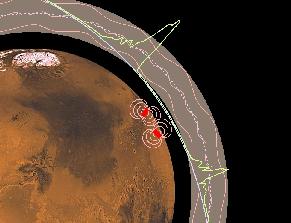This image illustrates one way in which the magnetometer instrument studies the planet.
Click on image for full size
Image from: NASA/JPL
Initial Mars Global Surveyor Findings
These are some of the initial findings of Mars Global Surveyor.
- There definitely is a magnetosphere near Mars.
- Geologic features at Valles Marineris and elsewhere.
- suggests the importance of geologic processes such as erosion by wind and water
- Evidence of soil/atmosphere/water-cycle interactions somewhat like those of Earth.
- The altitudes of such features as Olympus Mons, the bluff separating the southern and northern hemispheres, and other features.
- More details about the Martian Atmosphere
These findings help address
questions which remain about Mars.
You might also be interested in:
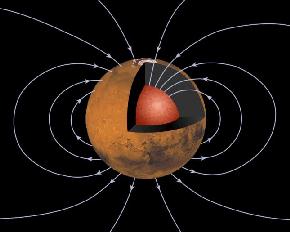
An important new result from the Mars Global Surveyor (MGS) mission is the definite confirmation of the presence of a magnetosphere around Mars. Previous missions did not make really good measurements
...more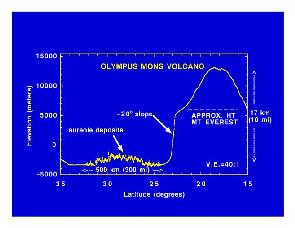
Mars Global Surveyor carries an instrument which measures the heights of things. This instrument is called an altimeter, or "altitude-meter". The graph to the left shows the results returned from Mars
...more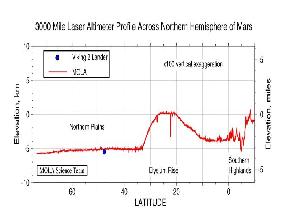
Mars Global Surveyor carries an instrument which measures the heights of things. This instrument is called an altimeter, or "altitude-meter". The picture to the left shows Mars Global Surveyor's measurement
...more
Mars Global Surveyor carries an instrument which measures the heights of things. This instrument is called an altimeter, or "altitude-meter". The picture to the left shows the results returned from Mars
...more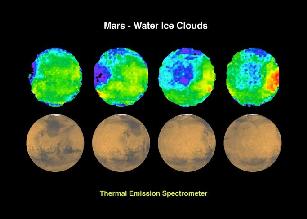
You might think that clouds in the sky have to be made of water like those of Earth, but this is not always so. Clouds might be made of carbon dioxide or ammonia. Just take a peek at the planets Jupiter
...more
The Mars Odyssey was launched April 7, 2001, from Florida. After a six-month, 285 million-mile journey, the Odyssey arrived at Mars on October 24, 2001. The Odyssey is in its aerobraking phase right now.
...more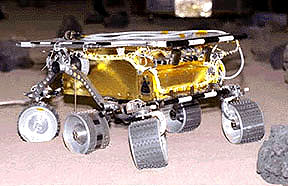
The Mars 2005 mission is still in the planning stages. It is set to launch in the year 2005.
...more


